What Are The Different Types Of Wallpaper?

We admit, buying wallpaper is confusing. It’s like you have to educate yourself on a whole new set of words and jargon before you can make a purchase.
The wallcovering industry has spent a lot of time trying to figure out how to make the whole process as easy and pain free as possible, but as you can probably tell, there are limits due to the sheer number of variations.
It also doesn’t help that wallpaper, in the United States, was never standardized from the onset. Every factory produced wallpaper its own way, without any real oversight.
Hence, the reason why there are so many roll sizes (single rolls, double rolls, triple rolls and quadruple rolls) as every manufacturer has their own unique standard of measurement.
However, for this article we are just talking about the main material a wallpaper is made from. This is also referred to as the backing or finish, all three terms being used interchangeably.
The Original Paper Wallpaper
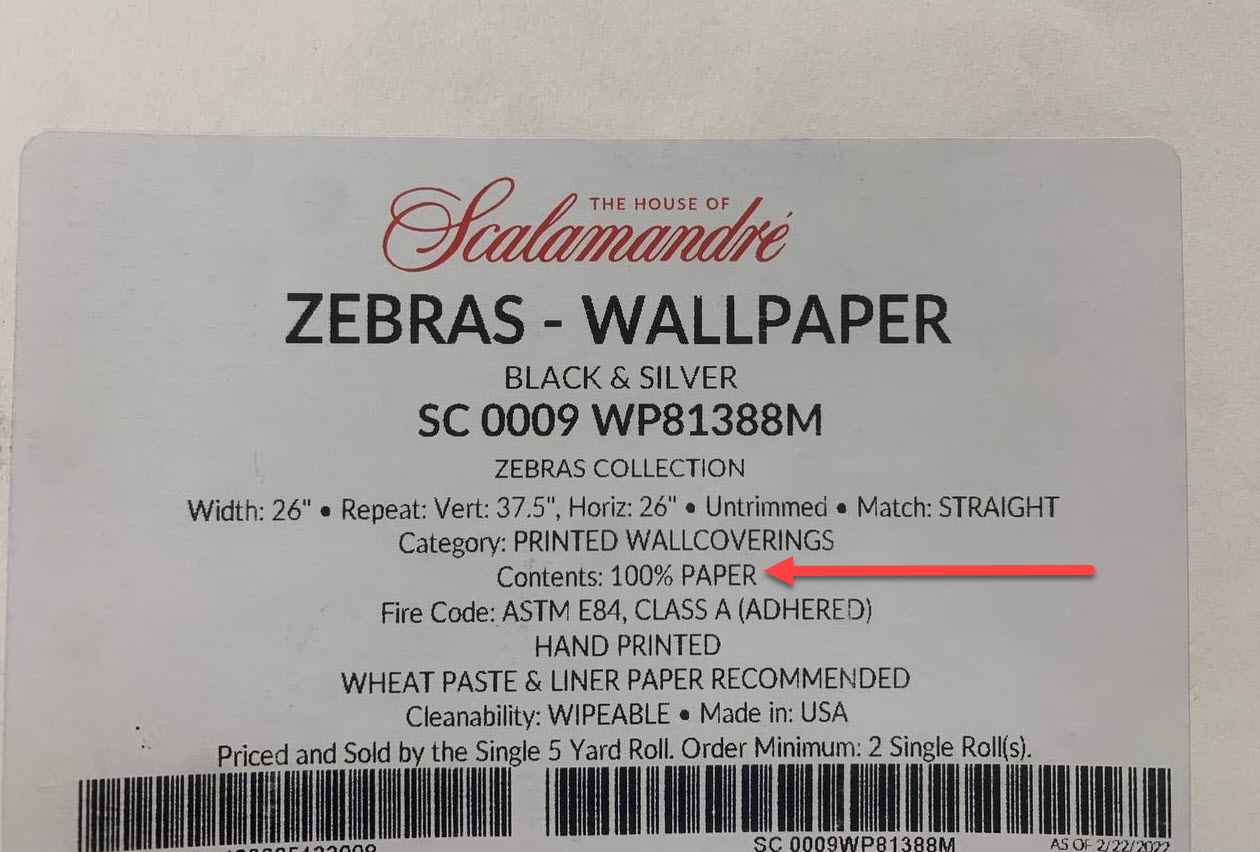
In the US, most 100% paper are found in costlier costlier designer prints like Scalamandré (above).
This wallpaper is just made just from paper. That’s it! Just 100% paper.
It tends to get overshadowed by the newer ones which is ironic, because it’s the original. No frills or thrills, just wallpaper made out of paper that comes from trees.
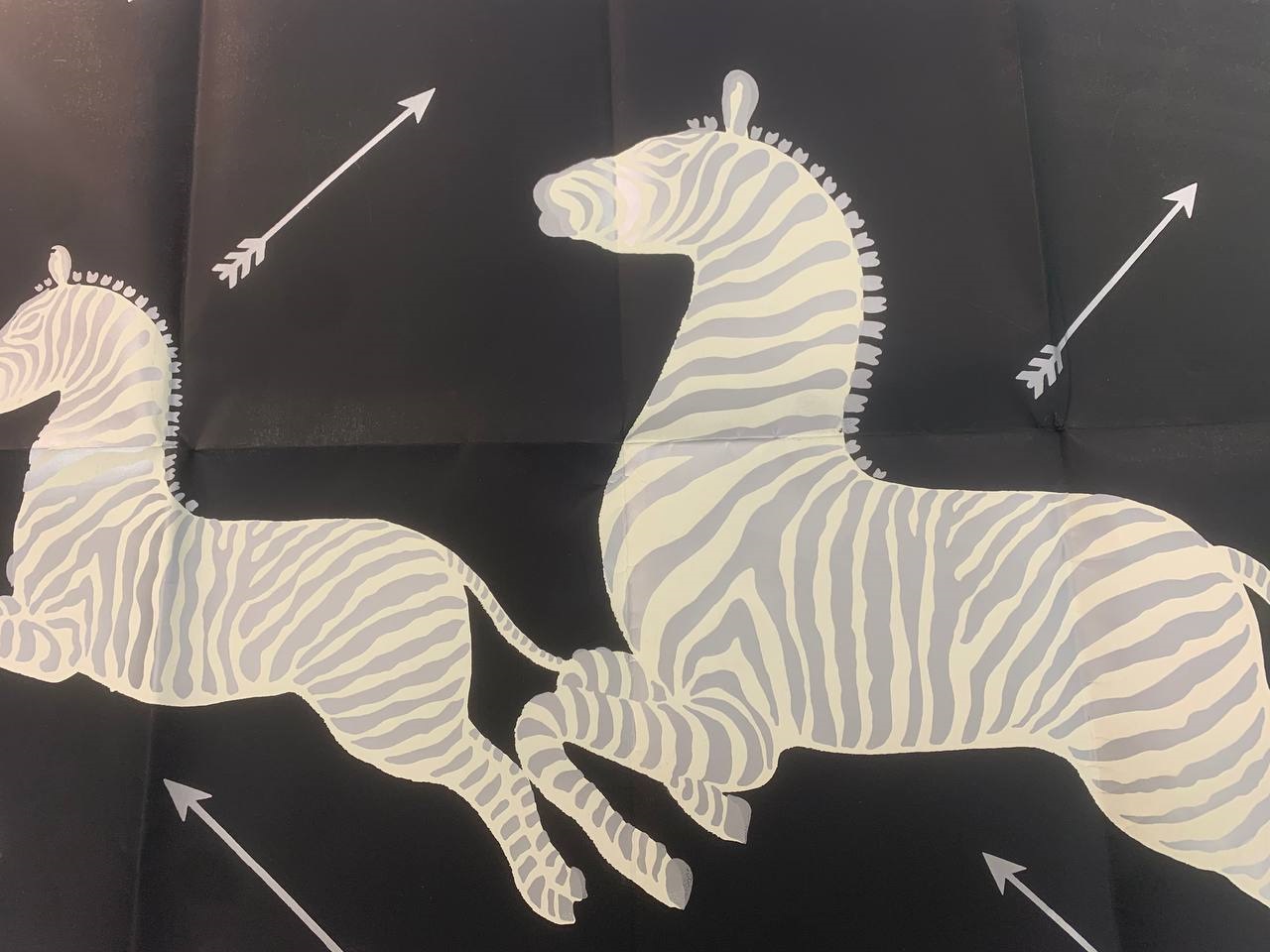
This is a famous black Zebra print from Scalamandré, on a 100% pure paper backing (above).
Most of the higher end wallpaper will be paper or non-woven because the other types tend to have a glossier finish. 100% paper wallpaper has the classic matte look many people desire.
Paper backing will always be unpasted and always require glue.
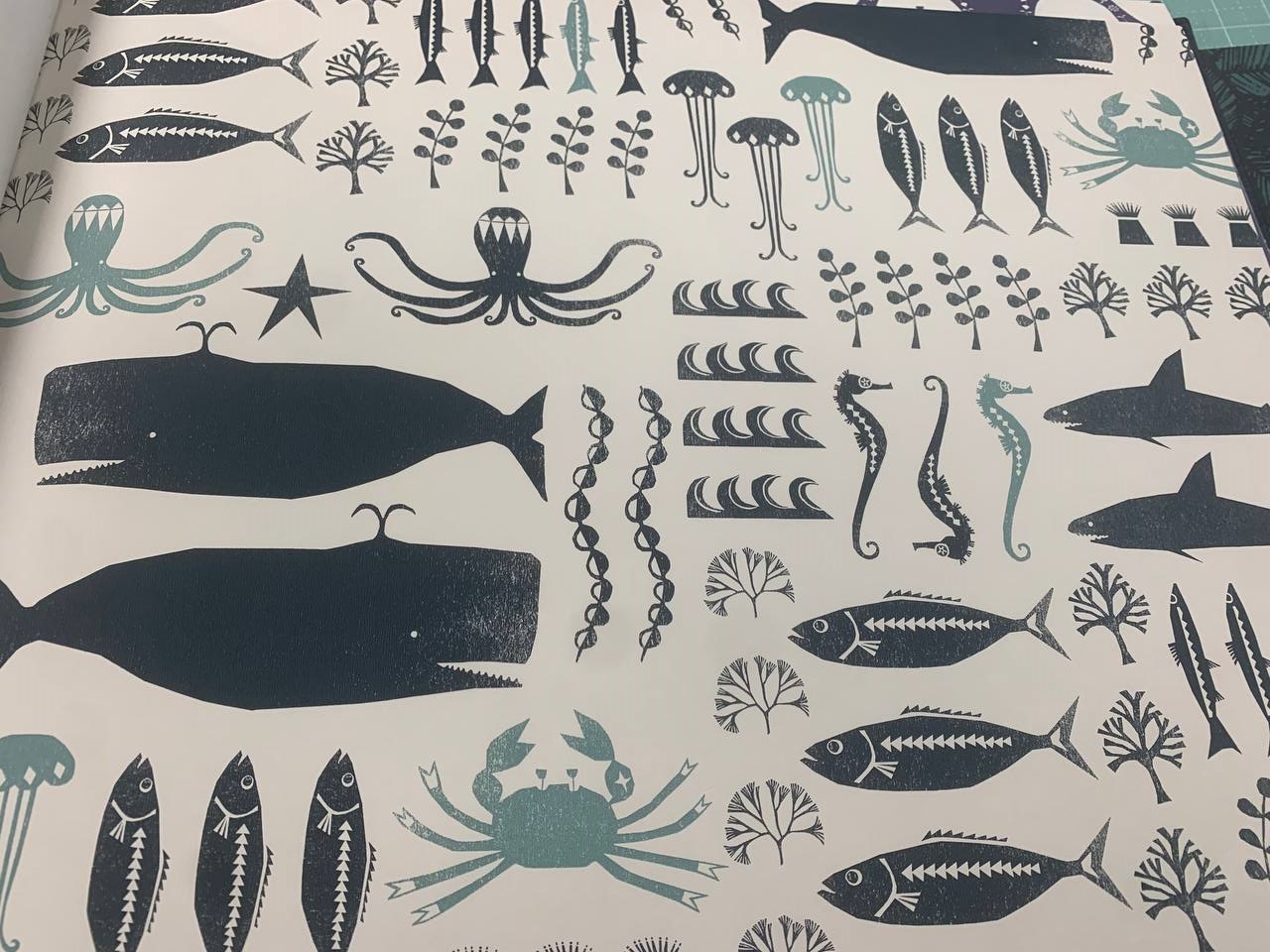
Notice the matte finish on this whale print, made in the UK on 100% paper (above)
We should also add that most of the European wallpaper, including most Scandinavian designs, will be made from 100% paper.
Our friends across the Atlantic have completely different tastes than us (they prefer a lot more color) and when it comes to wallpaper stick with the classic 100% paper backing.
Non-Woven Wallpaper
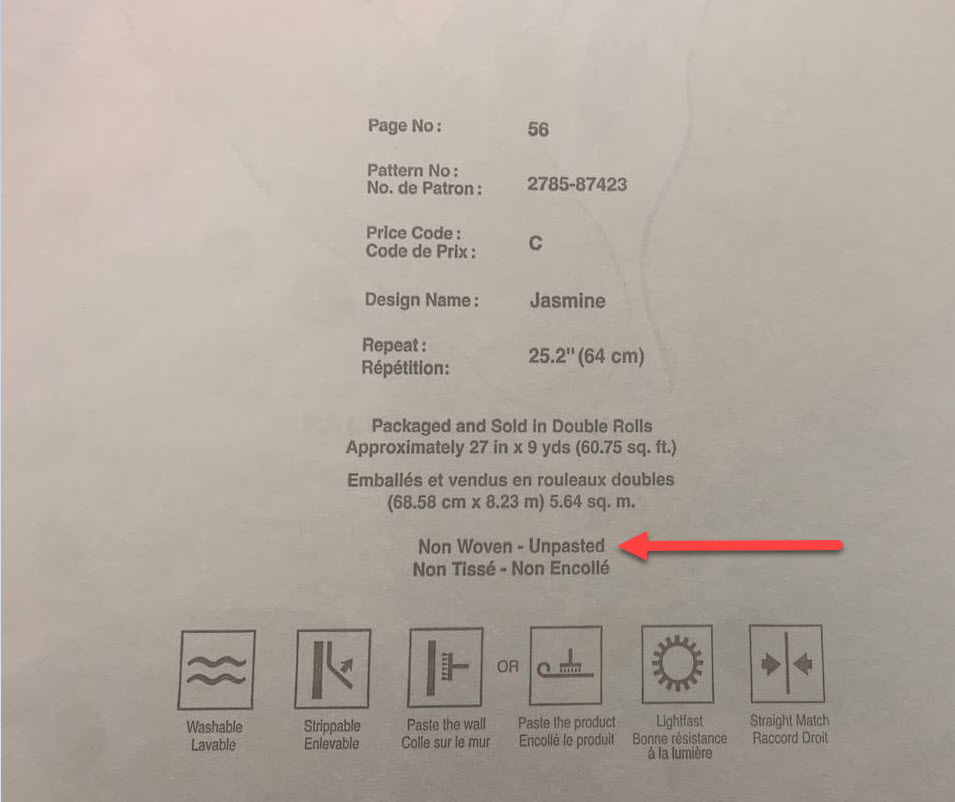
With few exceptions, non-woven wallpaper will be unpasted (above)
Right now, this is probably the most popular type of wallpaper in the US and Canada.
If you’ve ever read Goldilocks and the Three Bears, you would understand why. Non-woven is the wallpaper that is just right.
It’s in the middle. 100% pure paper is too lightweight for some people while vinyl can be too heavy, too glossy or feel too plastic.
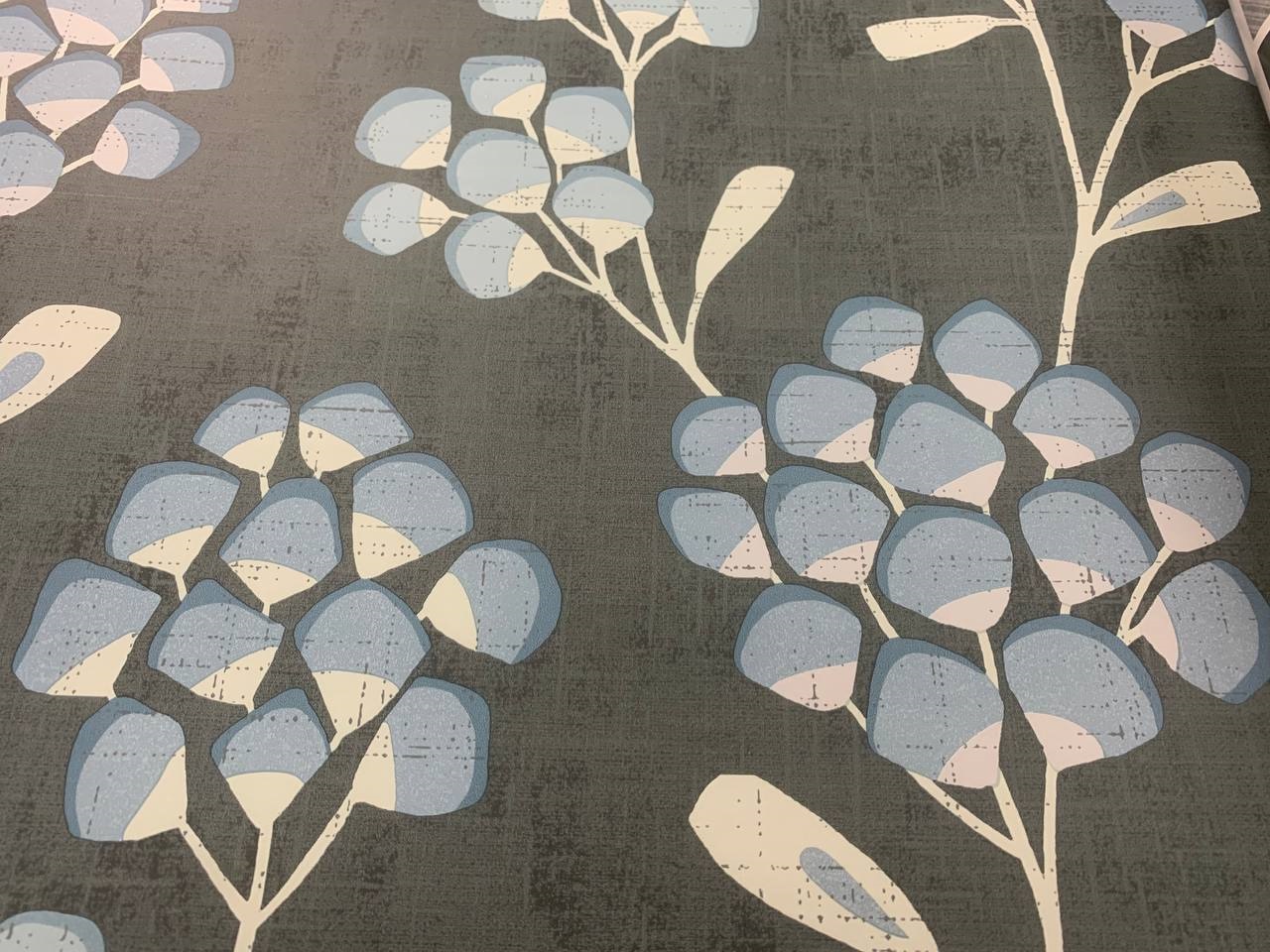
An example of a non-woven paper, from the Sarah Richardson collection (above)
Non-woven wallpaper is a combination of natural fibers and a little vinyl mixed together to create a breathable, flexible and more durable material than regular paper backing wallpaper.
Some non-woven wallpapers have no vinyl at all in them and are just made from natural and synthetic plant fibers.
You could say that this is the next evolution from 100% paper backing, but stops short of a full vinyl. There are many people who don't like vinyl and usually for them, non-woven will be the best option.
When this material was first introduced, the ease of installation and removal was one of the top selling points. It's made to go up easily and come down, not in little chunks and scraps, but in long flowing sheets.
Non-woven backing usually requires glue.
Vinyl Wallpaper
Vinyl wallpaper is the most durable wallpaper option. It can take a beating and keep on ticking in comparison to 100% paper and non-woven wallpaper.
Vinyl is a common recycled plastic used to make records, food wraps, carpet, linoleum flooring and many indoor and outdoor signs.
However, unlike the two just mentioned, vinyl is split up into three sub-categories (explained below).
1. Solid Vinyl
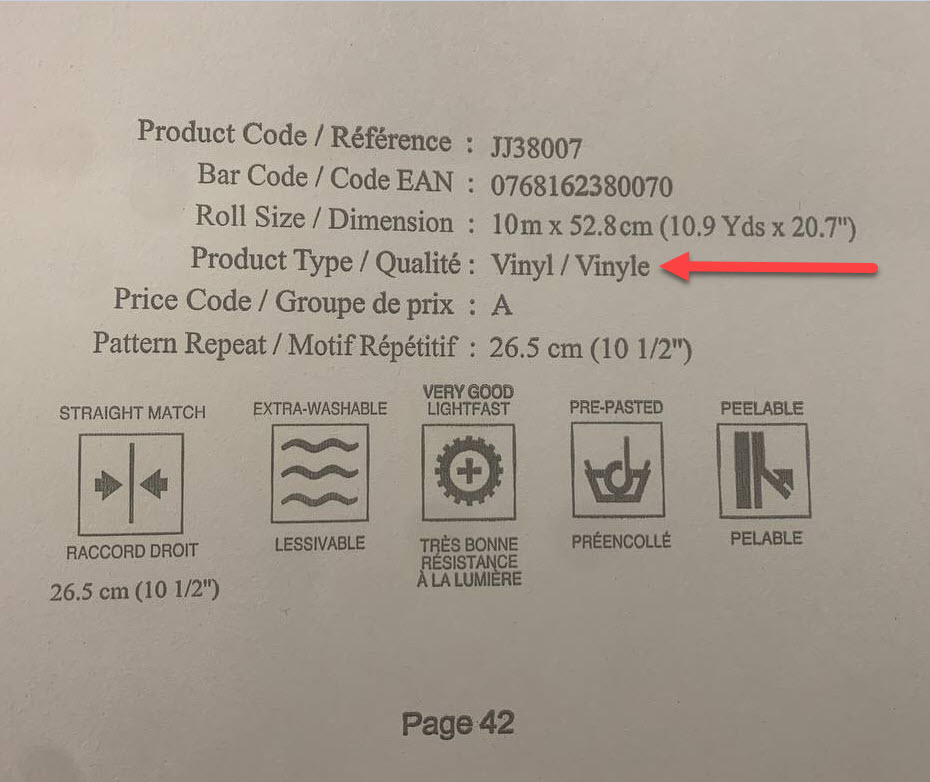
Solid vinyl is very durable, washable and almost always prepasted (above)
This is a full 100% vinyl wallpaper. When you see the word “solid vinyl,” you are looking at the vinyl of all vinyls. It’s highly washable, scrubbable, and scratch resistant. Many people chose to put this in their kitchen, bathroom, powder bathroom and laundry room for this reason.
Solid vinyl is also easy and inexpensive to produce so it will give you the most bang for your buck when compared to all the other wallpaper options. That is not to say that all solid vinyl wallpaper looks cheap.

Solid vinyl will be glossier but stronger than other types of wallpaper (above)
Some have lovely silk and faux fabric textures that appear very intricate and rich, albeit without a high price tag. Most solid vinyl wallpaper currently on the market is prepasted.
See: Prepasted Solid Vinyl Collections
We need to note that there is an ongoing debate related to the harmful effects of long-term exposure to vinyl on the wall since it is plastic. You will have to make your own decision, but we can say that the solid vinyl made by most US wallpaper manufacturers now (at least all the brands we carry) are PVC-free that do not emit harmful toxins into the air.
2. Vinyl Coated
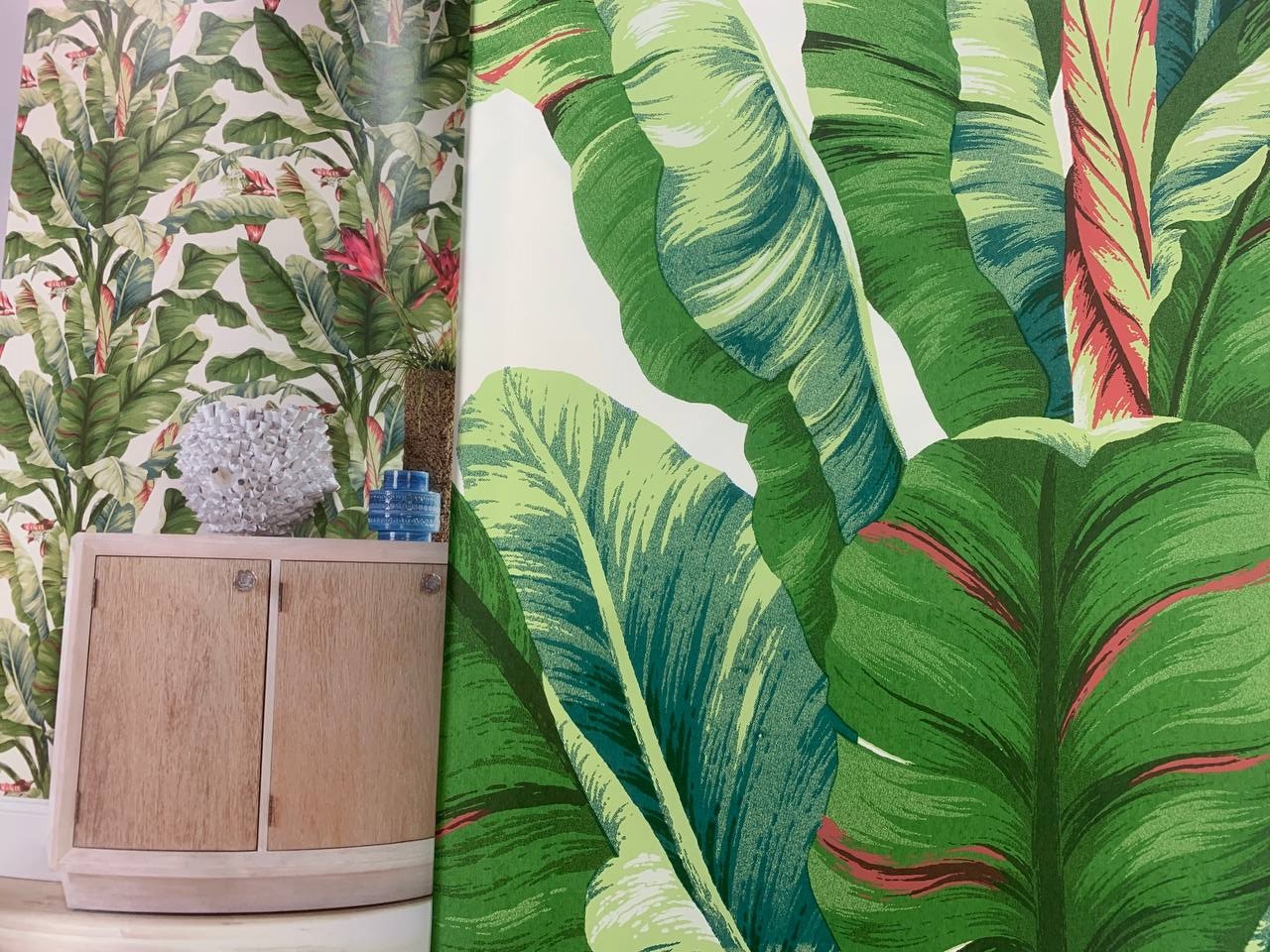
Vinyl coated is a middle ground between non-woven and solid vinyl, made mostly by York (above)
Vinyl coated wallpaper contains less vinyl than solid vinyl wallpaper. It does have vinyl but like the name implies, acrylic type vinyl or polyvinyl chloride (PVC) is sprayed onto the paper substrate, making it more scrubbable and strippable than 100% (pulp) paper or non- woven paper.
This gives you a nice medium between non-woven (maybe too light) and solid vinyl wallpaper (not everyone likes the look, feel or smell of pure vinyl).
Note: Vinyl coated is less glossy and more matte than sold vinyl but can still have a subtle shine to it.
Vinyl coated wallpaper had its heyday in the early 2010s and you won’t see many new collections that are vinyl coated. There are still just some York collections remaining that have not yet been discontinued.
It’s been replaced with non-woven as the market has decided it wants very little, to no vinyl, or wants the full strength of a full solid vinyl. This middle option has been left behind.
3. Fabric Backed Vinyl
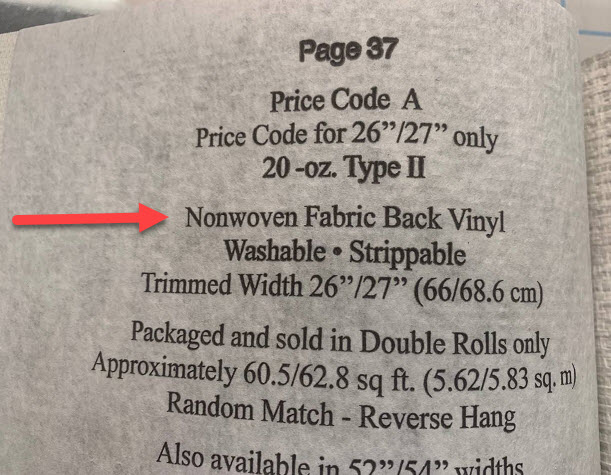
Fabric backed vinyl is the strongest wallpaper you can hang (above)
This is the strongest of all types of wallpaper, combining the strength of vinyl and heavy-duty fabric together. Whenever you see the word “fabric backed” or “fabric-backed vinyl” think of industrial grade material that is used in hotels, office buildings, large event corridors, or airports.
You can’t scratch or tear this wallpaper unless you’re as strong as the Incredible Hulk. While this type is primarily used in commercial areas, many homeowners choose to hang this in their homes because they like how well it holds up.
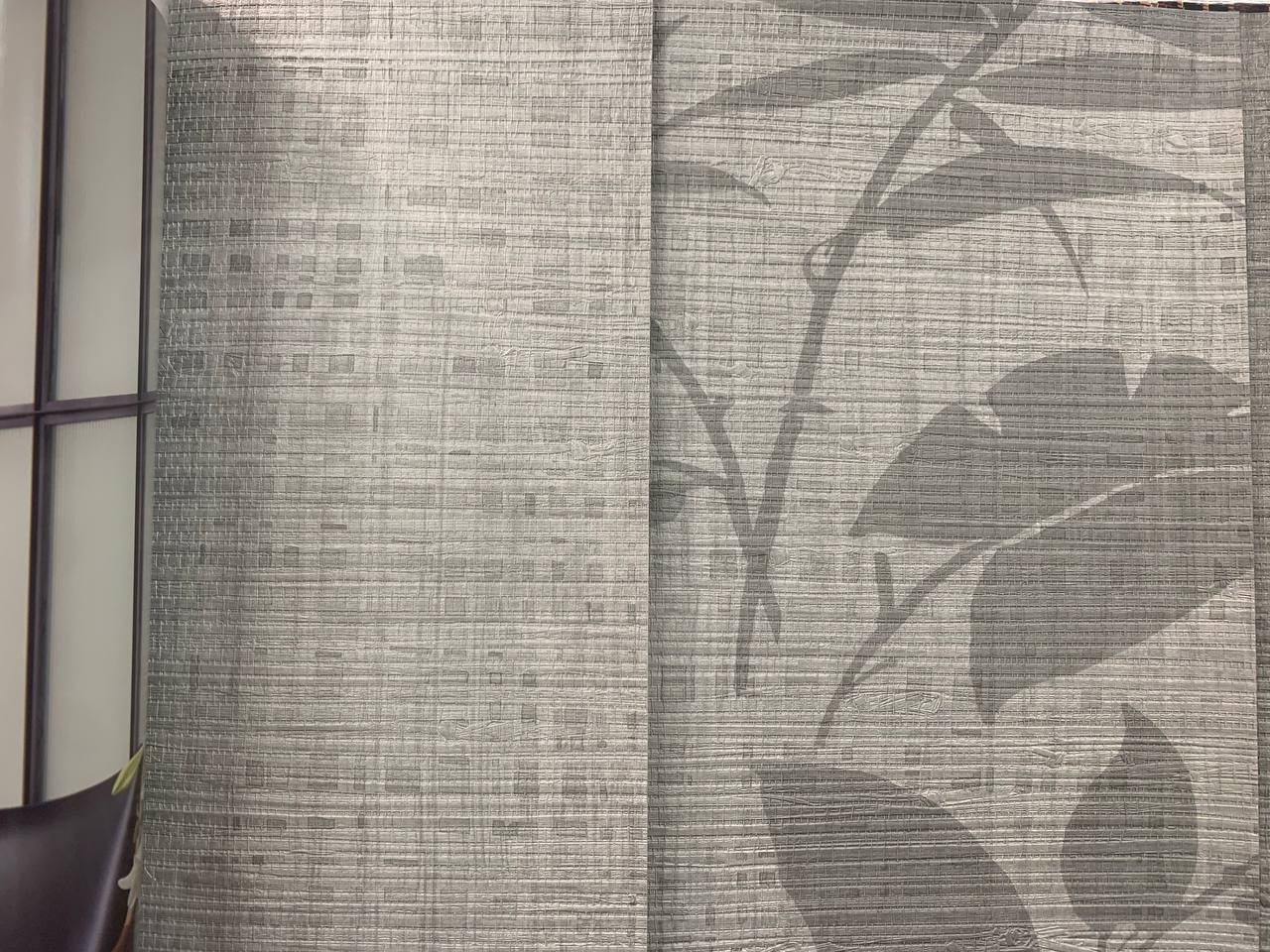
These are used in commercial spaces and in rooms where the homeowner wants max durability (above)
Most fabric-backed vinyl comes in large 30-yard bolts which is a hindrance for most people since they won’t need that much for a standard sized room. However, there are several collections that offer this type of wallpaper in standard 27 in x 27 ft or 20.50 in x 33 ft double rolls.
Prepasted Wallpaper
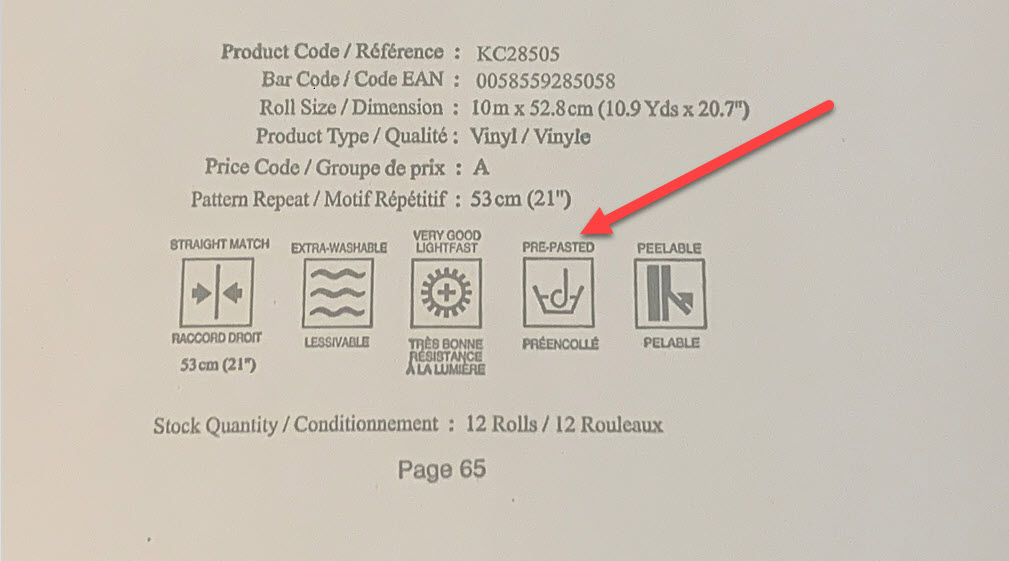
Prepasted wallpaper only requires water to activate the adhesive on the back (above).
This wallpaper has glue embedded into the back of it. You won’t even notice it on the back, either by look or feel, until it becomes activated by adding water.
Some people do this by spraying the back with a sprayer or water bottle and others unwind the rolls and dunk each sheet into a trough filled with water. As stated earlier, prepasted wallpaper can either be non-woven, vinyl coated, or sold vinyl.
There are three wallpaper manufacturers that make prepasted wallpaper: York Wallcoverings (Sure Strip), Brewster Home Fashions (Easy-Walls), and Norwall Wallcoverings (no brand name for their prepasted line).
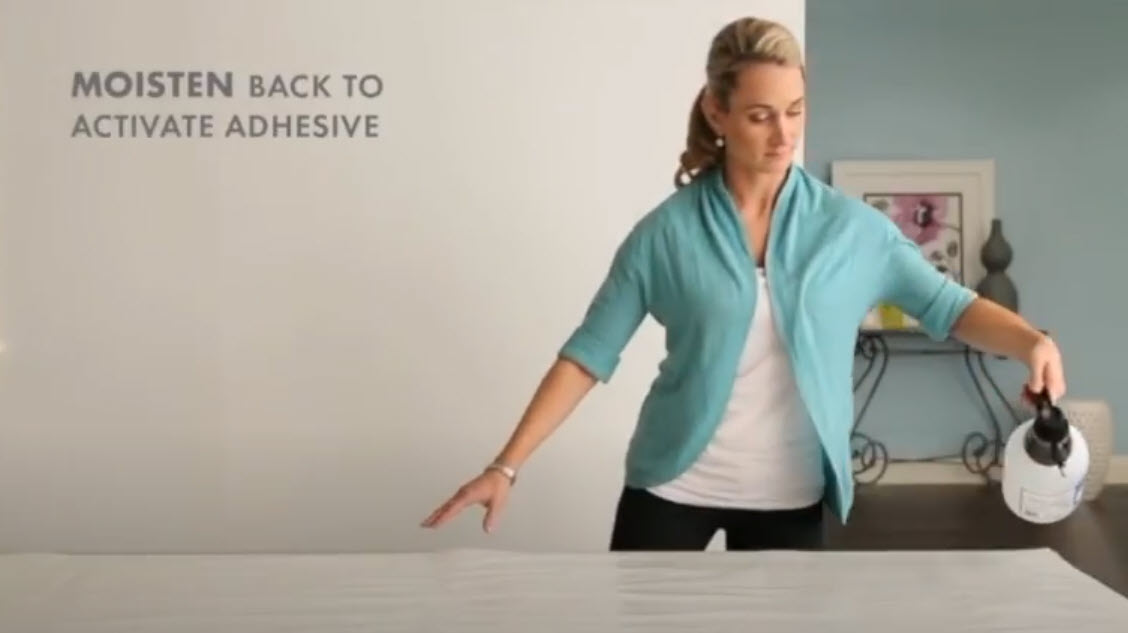
You can dunk the wallpaper in a trough or spray the back with a water bottle (above).
Note that the more expensive higher-end wallpaper, those costing over $50 per single roll, will never be prepasted.
For a list of prepasted collections click here.
Prepasted wallpaper requires no glue.
Peel and Stick Wallpaper
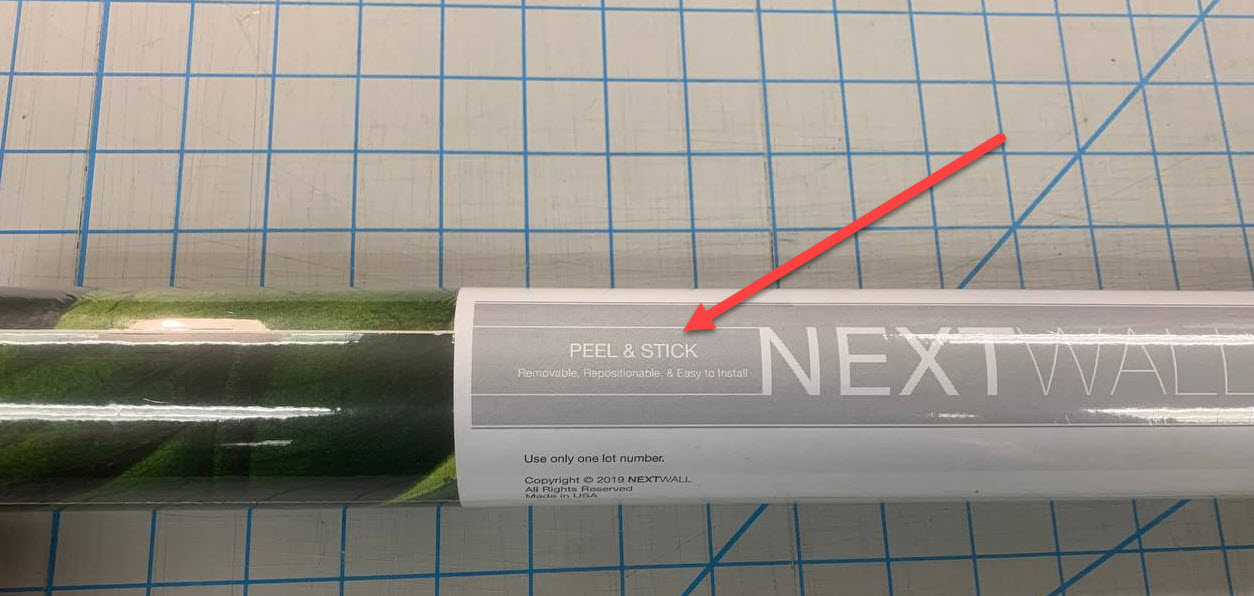
Peel and stick appeal to people who want wallpaper on a temporary basis (above).
This wallpaper goes one step further than prepasted paper. The backing is sticky and ready to be applied without any additional glue or water. All you need to do is peel the thin plastic from the back and hang your wallpaper.
It's made for people who are looking for more temporary wallpaper options, including renters. You can hang it and take it down when needed. It’s also reusable so when you take it down, you can hang it back up in a new room.
Though marketed this way, we don’t think or promote peel and stick as being any easier than other types of wallpaper. For one, you will need to hang it on a smooth and primed wall for it to look good. So, this part stays the same.
We say this because we see most people just try to hang this on bare drywalls, sometimes textured, without any prep work and the result is air bubbles visible throughout the wall. Not a pretty sight!
Secondly, the sticky adhesive on the back makes this type of wallpaper very hard to maneuver and slide into position.
Professional installers hate it and many don’t want to deal with it because it makes their process slower than normal. The installers who will work with peel and stick, usually end up adding paste to the back anyway so they can easily slide each sheet into position on the wall.
By doing this, the wallpaper is not easily removable nor reusable in the future.
Peel and stick wallpaper requires no glue but many people use it anyway.
Natural Grasscloth
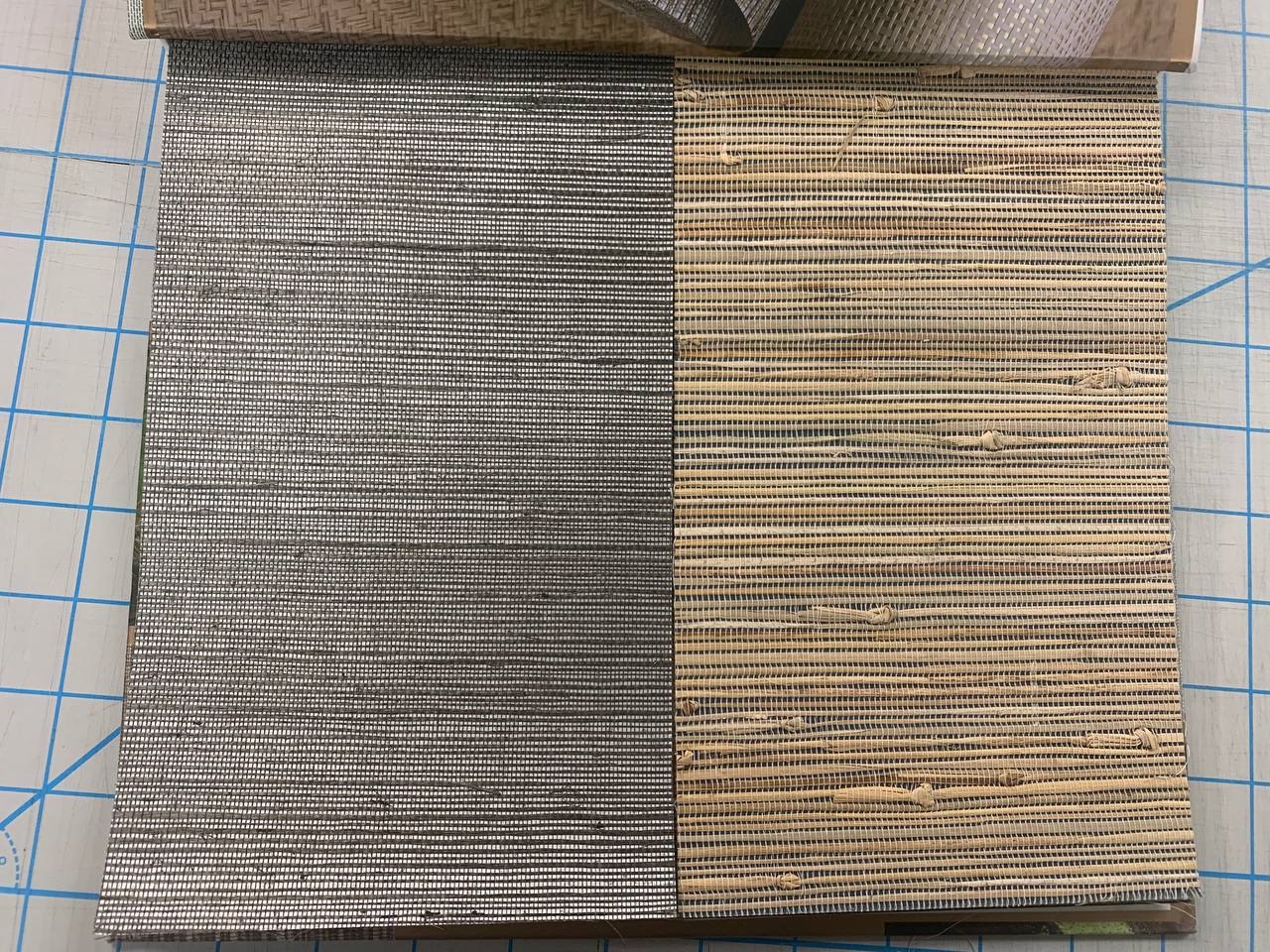
Natural grasscloth is made in Asia from real grasses and reeds (above).
Like the name implies, this wallpaper is made from natural grasses and dried reeds woven together on a paper backing. You will often see the word “sisal” used, which is just a fancier name for the same thing. Almost all natural grasscloth is made in Asia and then shipped to the United States. This wallpaper gives the room a very earthy look, feel and yes, smell. The smell is what really separates natural from imitation (faux) grasscloth. They can be similar in sight and touch but natural grasscloth fills the room up with an outdoorsy grassy scent that is unforgettable.
Natural grasscloth wallpaper will always have visible seams. This is an important characteristic to be aware of prior to finalizing your selection of wallpaper. This means you will see multiple lines on your walls once the installation is complete. It is designed to be part of “the look” and should be expected. Most people do not have a problem with this, however, it can irritate those who are more particular about visible lines. We want to prevent anyone from investing thousands of dollars on wallpaper and installation only to have it removed once noticing the seams.
Stains should be spot treated and dirt should be vacuumed with a clean vacuum cleaner brush.
Natural grasscloth installation requires both glue and medium to advanced expertise.
Also See: The Complete Guide To Buying Grasscloth Wallpaper
Organic Textures
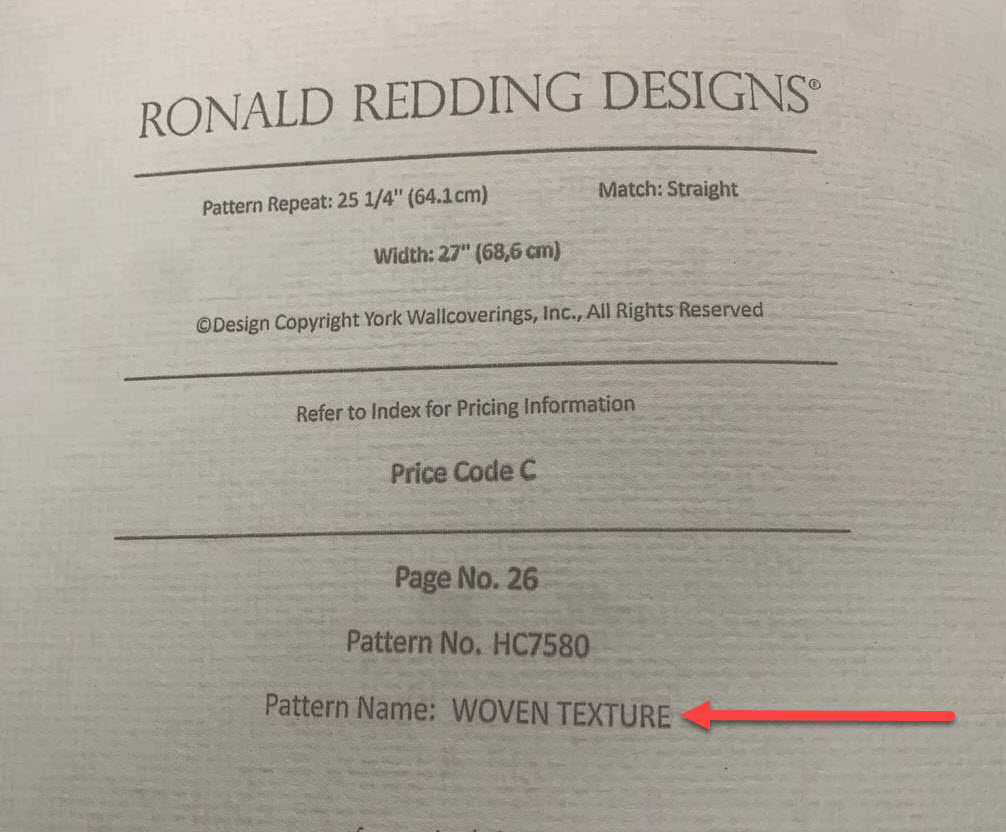
Organic textures are made from real materials found in nature (above)
This is almost identical to (real) grasscloth in that it’s made from all natural fibers. Most of the time it will be a linen fabric, but it can also be other raw materials like cork or wood.
We do not recommend a DYI install due to the delicate nature of this type of wallpaper.
A seasoned installer who knows how to handle specialty material like this is highly recommended. Because this and natural grasscloths are the most expensive types of wallpapers, it is in your best interest to hire a professional installer.
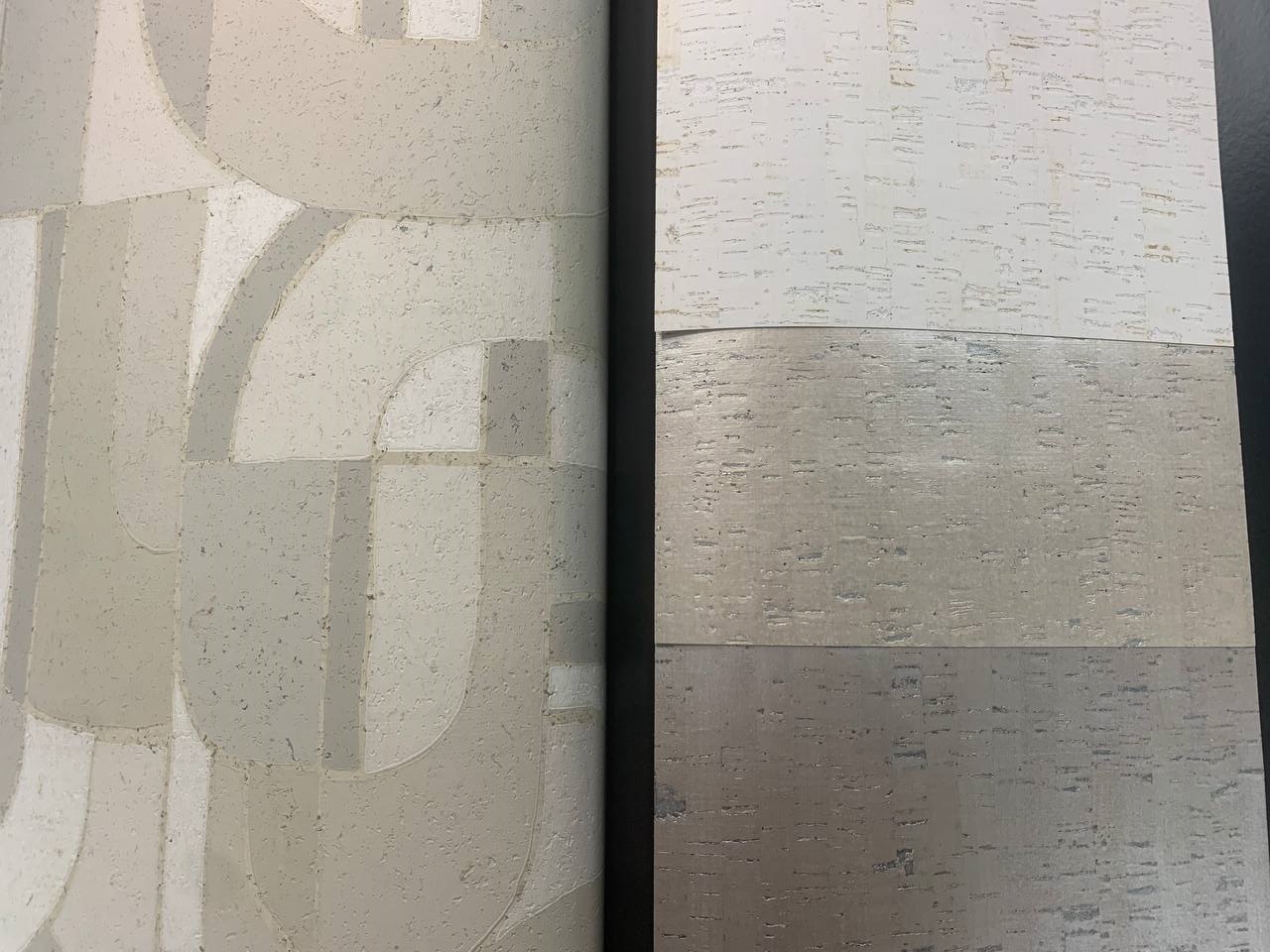
Organic textures are made with natural organic fibers like cork (above)
Mistakes can become costly and time consuming when reordering materials to restart the process.
Organic textures require glue and an advanced level of expertise.
- September - 2023
- November - 2022
- November - 2021
- June - 2021
- March - 2021
- February - 2021
- January - 2021
- November - 2020
- October - 2020
- June - 2020
- May - 2020
- October - 2019
- June - 2019
-
May - 2019
- What Is The Best Wallpaper Paste?
- Can You Paint Over Wallpaper?
- Is It Hard To Remove Wallpaper?
- Wallpaper vs. Paint: Which Is Better?
- What Is Vinyl Wallpaper?
- Does Wallpaper Have Asbestos?
- Is Wallpaper Waterproof?
- Can Wallpaper Be Hung Over Plywood?
- Which Wallpaper Is Best For The Living Room?
- What Is The Most Durable Wallpaper?
- What is Removable Wallpaper?
- How Do You Order Wallpaper?
- Does Home Depot Carry Wallpaper?
- December - 2018
- October - 2018
- July - 2018
-
June - 2018
- Wallpaper Ideas
- Commercial Wallpaper Installation Costs
- How Long Will Wallpaper Last?
- What Is Peelable Wallpaper?
- How Expensive Is Wallpaper?
- What Is Half Drop Wallpaper?
- Can You Wallpaper Over Textured Walls?
- Wallpaper Designs
- What Is The Average Cost of Wallpaper?
- Is It Cheaper To Paint Or Wallpaper A Room?
- Do You Need To Prime Walls Before Wallpapering?
- Is Wallpaper Removable?
- How Much Does It Cost To Install Wallpaper?
- How Do You Prepare A Wall For Wallpaper?
- What Are The Different Types Of Wallpaper?
- Can I Do Wallpaper In A Bathroom?
- September - 2017
- August - 2017
- June - 2017
- April - 2017
- March - 2017
- December - 2016
-
November - 2016
- Why You Need to Pay Attention to Wallpaper Repeat
- Difference Between Pre-pasted and Non-prepasted Wallpaper
- Wallpaper Dye Lots, Runs, and Batches? Why Do they Matter?
- How To Shop For Wallpaper?
- Wallpaper Recommendations for Large, Uneven Areas – Hallways, Foyers, and Stairs
- When Wallpaper Shrinks and How to Minimize the Problem
- Recommendations for Wallpaper in the Bathroom
- The Purpose of Wallpaper Primer
- Can I Cover Brick and Stone with Wallpaper?
- Which Wallpaper to Use – Paper, Vinyl Coated, Coated Fabric, Solid Vinyl
- Stores That Carry Wallpaper In Stock
- Can I Hang Wallpaper over Wood Panels?
- October - 2016
- September - 2016
- August - 2016
- July - 2016
- June - 2016






